Homemade Yogurt Mistakes
Before I start detailing this ridiculous project, I’d like to point out that I fail in the end. There is no great yogurt recipe hidden in here, no surprising technique that changes everything. I tried some methods, some reasonable and some quite stupid, and none of them worked. I just want to make some respectable yogurt at home, and I’m hoping some of you can help.
I thought this would be an easy exercise resulting in containers of beautiful white yogurt in my fridge ready to dip into at any time. But making yogurt is hard. It requires careful watching and measuring, and the results weren’t really worth the effort. Actually, one of the experiments was edible and pleasant, if not particularly exceptional, and the other...well, I’ll get to that later.
The basics of the project that I developed from various sources included warming the milk to 185 degrees Fahrenheit, cooling it down to between 86 degrees and 113 degrees, and then adding the yogurt starter. Let it all ferment for a while, and then you’ll have yogurt. Easy, right?
Using a simple recipe from Farms and Foods of Ohio , I heated a 4 cups of Snowville Creamy's excellent milk up to 185 degrees, and cooled it to 110 degrees.
Then I added 3 tablespoons of yogurt--the starter--whisked it together, then poured everything into a clean glass jar, wrapped a towel around it, and set it aside on the counter for 6 hours.
When I opened up the jar I had yogurt. Albeit one with many major flaws.
First off, the yogurt wasn’t firm enough.
My cheesemonger who sold me the yogurt warned me, and even the caption in the Farms and Foods of Ohio stated that the yogurt would be “smooth” and “silky”. And since I used whole milk, eating it felt akin to mixing granola with heavy cream. Instead of feeling healthy and refreshed, I felt fat and slow.
Also, the yogurt didn’t have much tang.
Perhaps the most distinctive attribute of yogurt is that wonderful tang which marries so well with fruit and granola. The yogurt I used as a starter had such a great flavor, but none of that really translated into my version. The faintest hint was present, but it paled in comparison to the starter. It felt like I had just diluted the little yogurt I started with with lots of milk.
It wasn’t a complete failure. I haven’t thrown it away, and it’s doing an amiable job for breakfast, but I probably won’t make it again because I can buy relatively cheap tubs of excellent yogurt at the store.
If I was going to try make yogurt I again I wanted something outlandish that could hopefully solve these problems. In Harold McGee’s On Food and Cooking he gives some guidelines for how industrial yogurt is made and I figured I could pick up some good tips. It contains the same outline as the above recipe, but it just takes things a little further. Instead of just bringing the milk to 185 degrees, and then turning the heat off, the temperature stays at 185 for 30 minutes. After that it, just like the previous recipe, it cools things down. But instead of 110 degrees, McGee opts for 86 degrees. Oh, and it has to stay there for 18 hours!
His reasons seem important:
Rapid gelling produces a relatively coarse protein network whose few thick strands give it firmness but also readily leak why: slow gelling produces a finer, more delicate, more intricately branched network whose individual strands are weaker but whose smaller pores are better at retaining the whey.
How, exactly I would maintain that temperature was beyond me. But that didn’t stop from bringing a batch of milk to 185, cooking it for 30 minutes, and then cooling it down to 86 (or there about). Then and only then, did I think about how I could get this done. I realized early on that sitting a pot on a burner over low heat just wouldn’t work. I had to get more creative.
First try: a griddle set to low, with a pot stuck on top. But that had too much heat.
Second try: I diffused it with an iron skillet. But still, too warm. I even added a little water to the iron skillet. Not good enough.
Third try: I busted out my faithful slow cooker and turned the heat to “stay warm”. Then I dumped the yogurt into a ceramic bowl, and stuck it in. That was still too high, so I added ice cubes to cool down the pot. This kind of worked until the ice melted. Then I’d have to add more. But I was able to keep the temperature close to 86 degrees as long as I checked it regularly.
Did I mention this lasted for 18 hours? I checked this thing constantly, trying to maintain some kind of consistency. But it was fleeting. And when the marathon session was over, what came out looked exactly like cottage cheese, albeit some that looked disgusting, yellow, and potentially dangerous. I threw it out.
I don't doubt that McGee is right, but just not for me. He was talking about how things are done on high tech equipment, not slow cookers diffused with ice cubes. And because I didn't cover it, all kinds of dangerous bacteria could have landed on it and done bad things.
So the question begs, without fancy, devoted equipment, can good yogurt be made at home?
Beef, Milk, Milk, Yogurt

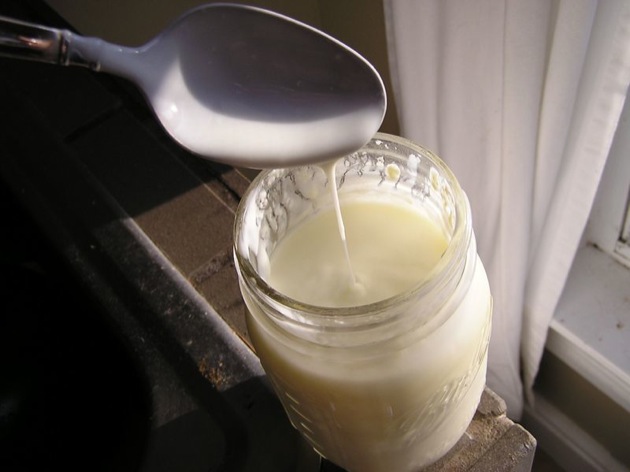
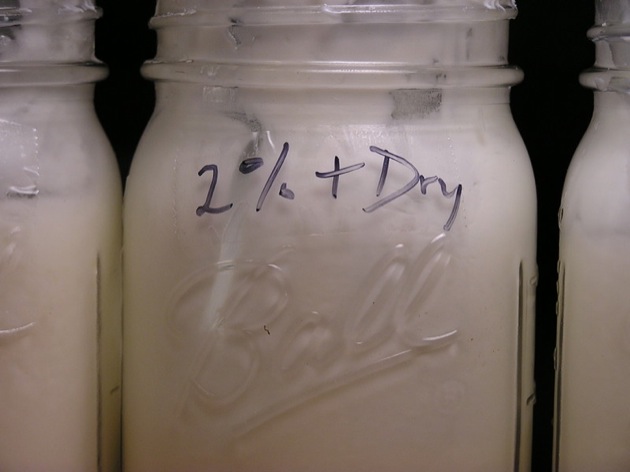
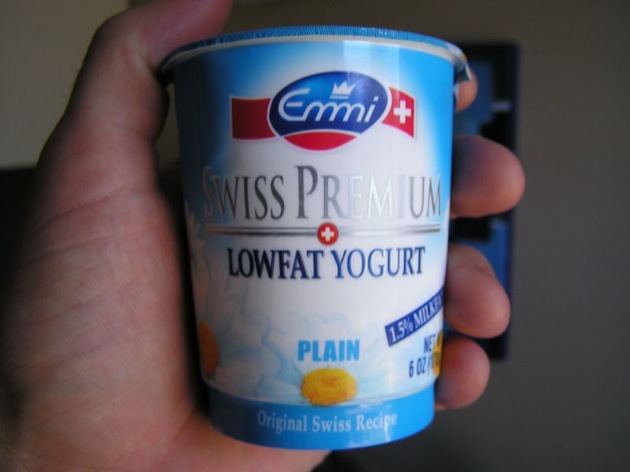
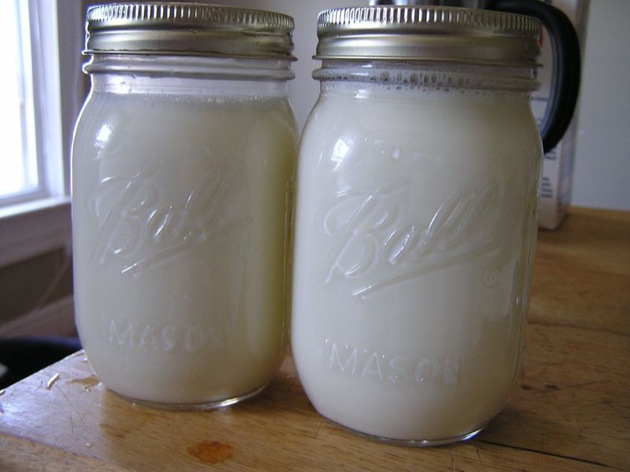
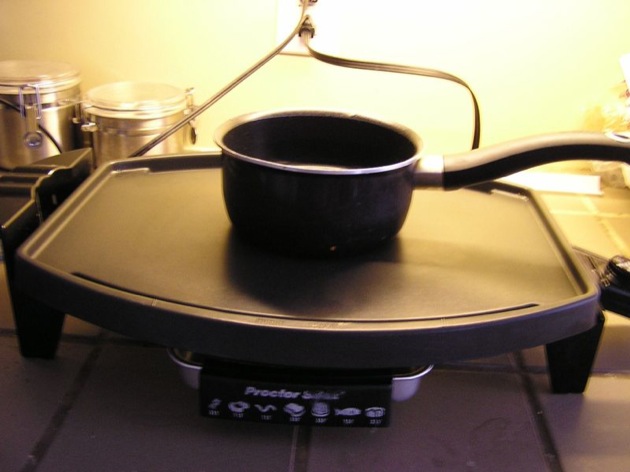
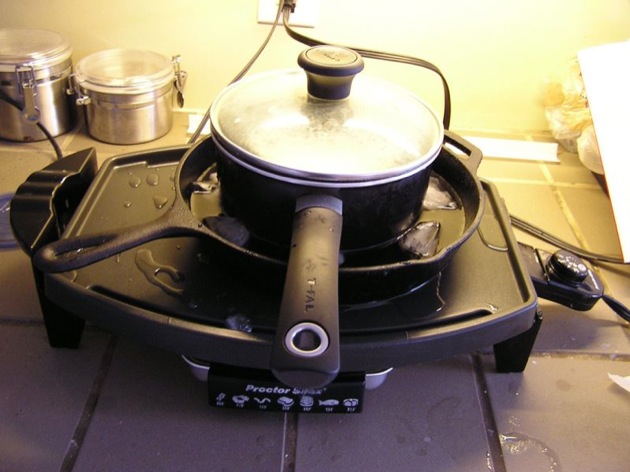
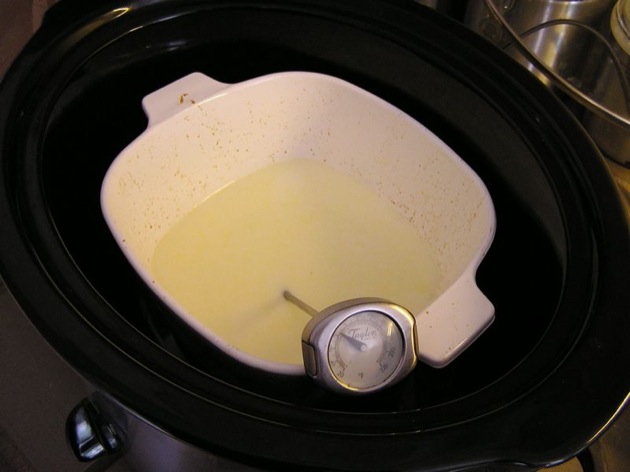
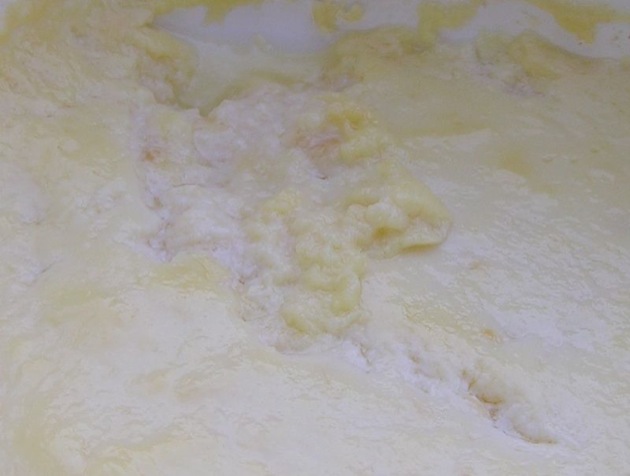
Comments:
Blog Comments powered by Disqus.